The Reader’s Digest Complete Guide to Sewing is a comprehensive sewing resource, first published in 1978, offering detailed instructions for sewers of all skill levels, from basics to advanced techniques.
Overview of the Guide
The Reader’s Digest Complete Guide to Sewing is a trusted resource that has been a cornerstone for sewers since its first publication in 1978. This comprehensive guide covers a wide range of sewing topics, from essential tools and fabrics to advanced techniques and projects. It provides clear, step-by-step instructions, making it accessible to both beginners and experienced sewers. The guide includes detailed diagrams, full-color illustrations, and practical tips, ensuring a polished finish for every project. Whether you’re mastering basic stitches or tackling complex patterns, this guide offers timeless advice and inspiration for all skill levels.
Why This Guide is a Timeless Resource for Sewers
The Reader’s Digest Complete Guide to Sewing remains a timeless resource due to its comprehensive coverage of sewing techniques, tools, and materials. Its clear, step-by-step instructions and detailed diagrams cater to sewers of all skill levels, from beginners to advanced crafters. The guide seamlessly blends traditional methods with modern practices, ensuring its relevance across generations. Its ability to adapt to evolving sewing needs while maintaining foundational principles makes it an indispensable reference. This guide’s enduring popularity stems from its thoroughness, accessibility, and commitment to helping sewers achieve professional-quality results, solidifying its place as a must-have resource for any sewing enthusiast.
Key Features of the Reader’s Digest Sewing Guide
The Reader’s Digest Complete Guide to Sewing is renowned for its detailed instructions, full-color illustrations, and diagrams that simplify complex techniques. It covers a wide range of topics, from fabric selection and pattern alterations to advanced tailoring methods. The guide includes practical tips for achieving professional results, such as mastering hemming, seam finishing, and buttonholes. Its comprehensive approach ensures that both beginners and experienced sewers can benefit. The inclusion of essential tools, materials, and step-by-step guides makes it a versatile resource for all sewing projects, ensuring it remains a go-to reference for sewers of all skill levels.
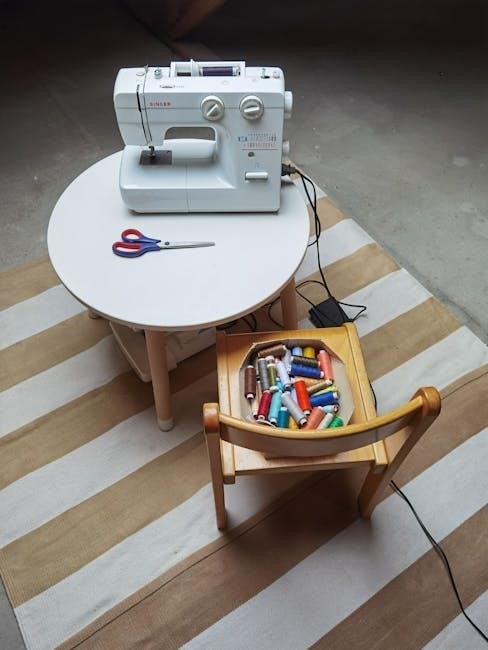
Understanding the Basics of Sewing
Sewing is the art of joining fabrics using needles, threads, or machines. It offers creative expression and practical skills, essential for crafting garments and home decor, with tools and safety tips covered.
What is Sewing and Its Benefits
Sewing is the art of joining fabrics using needles, threads, or sewing machines. It combines creativity with practicality, allowing individuals to craft custom clothing, home decor, and repairs. The benefits of sewing include self-expression, cost savings, and the satisfaction of creating something unique. It also fosters patience and attention to detail, making it a rewarding hobby. Whether for personal use or gifts, sewing empowers individuals to bring their ideas to life while preserving a timeless skill. This guide offers insights to help beginners and seasoned sewers alike master the craft.
Tools and Materials Needed for Beginners
Starting with sewing requires essential tools and materials. A good-quality sewing machine, sharp scissors, and a variety of needles and threads are fundamental. Measuring tools like tape measures and sewing gauges ensure accuracy. Fabric shears, pins, and a seam ripper are also indispensable. A sturdy iron and ironing board are crucial for pressing fabrics during projects. Beginners should also invest in a sewing kit containing basic notions like buttons, zippers, and fasteners. These tools provide a solid foundation for mastering sewing techniques and completing projects successfully.
Safety Precautions in Sewing
Safety is crucial in sewing to avoid accidents. Always handle sharp objects like scissors, rotary cutters, and needles with care. Keep fingers away from sewing machine needles and use a thimble for hand-sewing. Ensure your workspace is well-lit and free from clutter to prevent tripping. Avoid wearing loose jewelry or clothing that could get caught in machinery. Store sharp tools out of children’s reach. Regularly inspect and maintain your sewing machine to ensure proper function. Never leave a sewing machine unattended while it is operational. Following these precautions helps create a safe and enjoyable sewing experience for all skill levels.
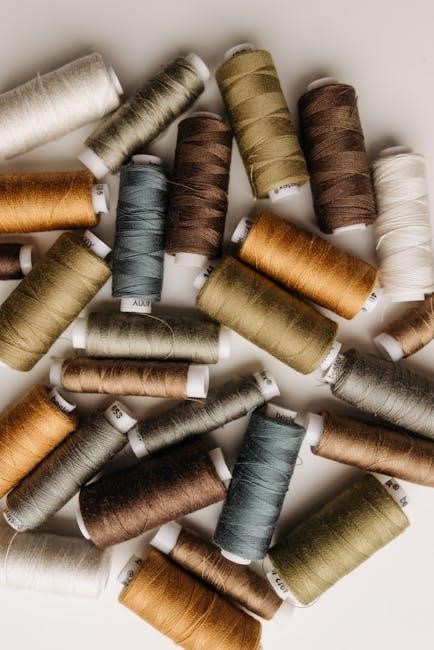
Essential Sewing Tools and Equipment
Essential sewing tools include needles, threads, scissors, and measuring tapes. Sewing machines are vital for efficiency, while notions like zippers and buttons complete projects. These tools ensure professional results.
Basic Sewing Tools: Needles, Threads, and Notions
Needles, threads, and notions are the foundation of sewing. The guide details various needle types, such as sharp, blunt, and heavy-duty, suited for different fabrics. Threads vary in material and weight, ensuring proper tension and durability. Notions like buttons, zippers, and hooks are essential for functional and decorative finishes. The guide provides clear instructions on selecting the right tools for specific projects, ensuring a professional result. Diagrams and step-by-step guidance help sewers understand proper usage, making these tools indispensable for both beginners and experienced crafters.
Understanding Sewing Machines: Features and Functions
Sewing machines are essential tools for efficient sewing, and the guide provides a detailed overview of their features and functions. It covers mechanical and computerized machines, explaining stitch options, tension adjustments, and presser foot uses. The section highlights how to choose the right machine for specific tasks, from basic sewing to advanced techniques. Clear instructions and diagrams help users master machine operation, ensuring smooth fabric handling and professional results. This comprehensive guide empowers sewers to utilize their machines effectively, enhancing creativity and productivity in every project.
Measuring Tools: Tape Measures, Gauges, and More
Measuring tools are indispensable for precise sewing, and the guide emphasizes their importance. Tape measures are used for body measurements and fabric cutting, while sliding and seam gauges ensure accuracy in hemming and seam allowances. The guide explains how to choose the right tool for each task, highlighting features like adjustable locks and metric/inch markings. Proper use of these tools ensures a perfect fit and professional finish. By mastering measuring techniques, sewers can achieve consistency and accuracy in every project, making these tools essential for success.
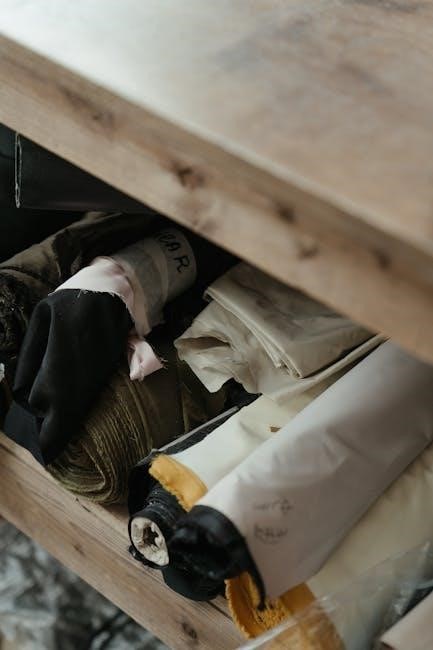
Working with Fabrics
Fabric is the foundation of sewing, and the guide explains how to understand and work with various types, textures, and weights. Learn to identify fabric properties and select the right material for your projects, ensuring optimal results and durability. This section provides practical advice on fabric handling, preparation, and care, helping sewers achieve professional finishes and long-lasting garments.
Understanding Different Types of Fabric
Fabric is the foundation of sewing, and the guide explores various types, from natural fibers like cotton and silk to synthetic materials like polyester. It categorizes fabrics into woven and knits, explaining their unique characteristics, textures, and suitability for different projects. Readers learn to identify fabric properties such as drape, stretch, and durability, enabling them to make informed choices for garments, home decor, and accessories. This section provides a detailed fabric classification system, helping sewers select the perfect material for any sewing task, ensuring optimal results and professional finishes.
Fabric Properties: Texture, Weave, and Weight
Fabric properties like texture, weave, and weight are essential for successful sewing. Texture refers to the fabric’s surface feel, ranging from smooth to rough. Weave describes how threads are interlaced, such as plain or twill, affecting durability and drape. Weight determines a fabric’s heaviness, influencing its suitability for garments or home decor. Understanding these properties helps sewers choose fabrics that meet project needs, ensuring proper drape, comfort, and longevity. The guide provides detailed insights into these aspects, empowering sewers to make informed decisions for professional-looking results.
How to Choose the Right Fabric for Your Project
Selecting the right fabric for your sewing project involves considering purpose, season, and care requirements. Match fabric type to project use—breathable for garments, sturdy for home decor; Seasonal fabrics like lightweight cotton for summer and wool for winter ensure comfort. Check care instructions for practicality. Choose colors and patterns that suit your design. Fabric drape affects the final look; flowy fabrics for dresses, structured ones for bags. Durability matters for heavy-use items. The guide offers tips on sourcing, handling, and pre-treating fabrics to ensure successful outcomes.

Mastering Sewing Techniques
The Reader’s Digest Complete Guide to Sewing offers a comprehensive approach to mastering sewing techniques, from basic stitches to advanced methods. It provides step-by-step instructions, hands-on projects, and expert tips for improving skills and troubleshooting common challenges. The guide emphasizes the importance of practice, precision, and understanding fabric behavior to achieve professional results. Whether you’re a beginner or an experienced sewer, this guide equips you with the knowledge and confidence to tackle any sewing project with ease and creativity.
Hand-Sewing Tips and Essential Stitches
The Reader’s Digest Complete Guide to Sewing provides detailed hand-sewing tips and instructions for essential stitches, perfect for beginners and experienced sewers alike. With full-page instructions and multiple diagrams, the guide ensures a clear understanding of techniques like the running stitch, backstitch, and slipstitch. Tips on thread selection, needle choice, and fabric handling are also included. These hand-sewing skills are fundamental for repairs, embroidery, and finishing seams, offering a timeless foundation for any sewing project. The guide’s emphasis on precision and practice helps sewers master these stitches, enabling them to achieve professional-looking results with ease and confidence.
Machine Sewing: Basic Stitches and Techniques
The Reader’s Digest Complete Guide to Sewing offers in-depth guidance on machine sewing, covering basic stitches and techniques essential for every sewer. From straight stitches to zigzag and reverse stitching, the guide provides step-by-step instructions for mastering machine sewing fundamentals. Tips on thread tension, fabric handling, and maintaining your sewing machine are also included. These teachings help sewers troubleshoot common issues and achieve smooth, professional-looking results. Whether you’re working on simple repairs or complex projects, this section equips you with the skills to confidently operate your machine and optimize its capabilities for various fabrics and tasks.
Advanced Techniques: Tailoring, Embellishments, and More
The Reader’s Digest Complete Guide to Sewing dives into advanced techniques, offering expert advice on tailoring, embellishments, and specialized sewing methods. Learn intricate tailoring skills to create custom-fit garments, including working with lining, interlining, and precision stitching. Discover various embellishment techniques like embroidery, appliqué, and quilting to add unique touches to your projects. The guide also covers advanced stitching methods, such as welt seams and bound buttonholes, ensuring professional finishes. These techniques empower sewers to create sophisticated designs, from haute couture to personalized home decor, making this guide invaluable for those seeking mastery in sewing;

Pattern Alteration and Fitting
This section provides detailed guidance on altering patterns for a perfect fit, including tips on understanding body types and measurements to achieve polished results.
Pattern Alteration: Adjusting for Fit and Style
The Reader’s Digest Complete Guide to Sewing dedicating a detailed section to pattern alteration, offering practical advice for adjusting patterns to achieve a perfect fit and desired style.
It covers common adjustments, such as lengthening or shortening hems, altering sleeve lengths, and modifying necklines to suit individual preferences and body types. The guide also provides clear instructions on how to take accurate measurements and interpret pattern specifications, ensuring a flattering, custom fit. Whether you’re a beginner or an experienced sewer, this section empowers you to tailor patterns to your unique needs, making it an invaluable resource for creating personalized garments. The comprehensive approach ensures every sewer can master the art of pattern alteration with confidence.
Understanding Measurements and Body Types
The Reader’s Digest Complete Guide to Sewing emphasizes the importance of accurate measurements and understanding body types to achieve a perfect fit in garments. It provides detailed guidance on how to take precise measurements, interpret body proportions, and identify common body types, such as petite, tall, and plus-size frames. The guide explains how to analyze body shape and align patterns accordingly, ensuring flattering results. This section is crucial for sewers, as it helps them create garments that complement their unique physique, fostering confidence and a professional finish in every project.
Achieving a Good Fit: Tips and Tricks
Achieving a good fit is essential for professional-looking garments; The guide offers practical tips, such as making a muslin prototype to test fit before cutting fabric. It advises using swayback adjustments for curved figures and ensuring proper ease for comfort. Tips include leaving adequate seam allowances, pressing carefully, and making incremental alterations. Common fit issues, like neckline gaps or uneven hems, are addressed with simple fixes. These tricks help sewers of all levels create garments that flatter and fit perfectly, ensuring satisfaction with every project.
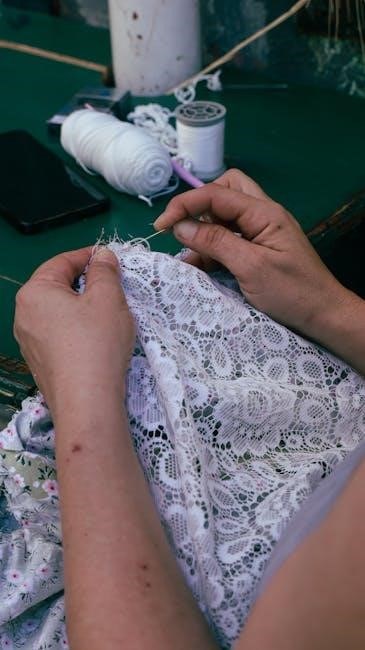
Constructing Garments and Projects
This section guides sewers through constructing various garment components, such as necklines, collars, and sleeves. It also covers working with zippers, buttons, and pockets, ensuring professional results.
Constructing Necklines, Collars, and Sleeves
Constructing necklines, collars, and sleeves requires attention to detail and precise techniques. The guide provides step-by-step instructions for various styles, ensuring professional-looking results. Learn how to create smooth necklines, from V-necks to crew necks, and craft collars that sit perfectly. Discover tips for fitting, aligning, and pressing to achieve a polished finish. Detailed diagrams and instructions help sewers master sleeves, whether raglan, set-in, or bell-shaped. This section also covers how to handle different fabrics and adjust patterns for a flawless fit, ensuring every garment looks tailored and professional.
Working with Zippers, Buttons, and Fasteners
Mastering zippers, buttons, and fasteners is essential for a professional finish. The guide provides clear instructions for installing zippers seamlessly, ensuring proper alignment and stress-free sewing. Learn techniques for sewing buttons by hand or machine, and discover how to choose the right fasteners for your fabric. Detailed steps cover everything from preparing buttonholes to securely attaching snaps and hooks. With tips for working with different fabric types, this section helps you achieve a polished, durable finish for garments and projects. It’s a must-have resource for adding functional and decorative elements with ease and precision.
Adding Pockets and Other Details
Add functionality and style to your projects with expert guidance on sewing pockets and embellishments. The guide offers step-by-step instructions for creating various pocket styles, from inseam and patch pockets to welt and zippered pockets. Learn how to accurately measure, cut, and sew pocket openings for a professional finish. Additional details like appliqué, embroidery, and decorative stitching are also covered, providing creative ways to personalize your creations. Clear diagrams ensure precision, making it easy to enhance your garments and accessories with practical and aesthetic details that elevate your sewing projects to the next level.

Finishing Touches
Master professional finishing techniques like hemming, seam finishing, and buttonholes to achieve polished results in your sewing projects, ensuring durability and a flawless appearance.
Hemming: Techniques for Professional Results
Hemming is a crucial step in sewing that ensures a clean, polished finish. The guide provides step-by-step instructions for various hemming techniques, from hand-sewing to machine stitching. Learn how to prepare fabric, fold hems accurately, and secure them with precision. Tips for invisible hems, curved edges, and stretchy fabrics are included, ensuring professional-looking results. Proper pressing techniques are emphasized to create crisp, sharp folds. Whether you’re hemming garments, home decor, or accessories, these methods guarantee durability and a flawless appearance, elevating your sewing projects to new heights.
Seam Finishing: Methods for a Polished Look
Seam finishing ensures seams are secure and visually appealing. The guide offers techniques like zigzag stitching, French seams, and serging to prevent fraying. Hand-finishing methods, such as whipstitching or binding, add a professional touch. Clear instructions guide you through each step, from cutting fabric to finishing raw edges. These methods not only strengthen seams but also enhance the overall appearance of your projects, making them look polished and well-crafted. Whether working on garments or home decor, mastering seam finishing elevates your sewing to a professional level.
Buttonholes and Other Finishing Details
Buttonholes are essential for functional and decorative purposes. The guide provides step-by-step instructions for creating perfect machine-stitched and hand-sewn buttonholes. Additional finishing details, such as rivets, eyelets, and decorative stitching, are also covered. Tips on securing buttons and snaps ensure durability. These techniques add a professional touch to garments and projects. Clear diagrams and instructions help master these details, making your creations look polished and professional. Whether for clothing or accessories, these finishing touches elevate your sewing projects to the next level of quality and craftsmanship.
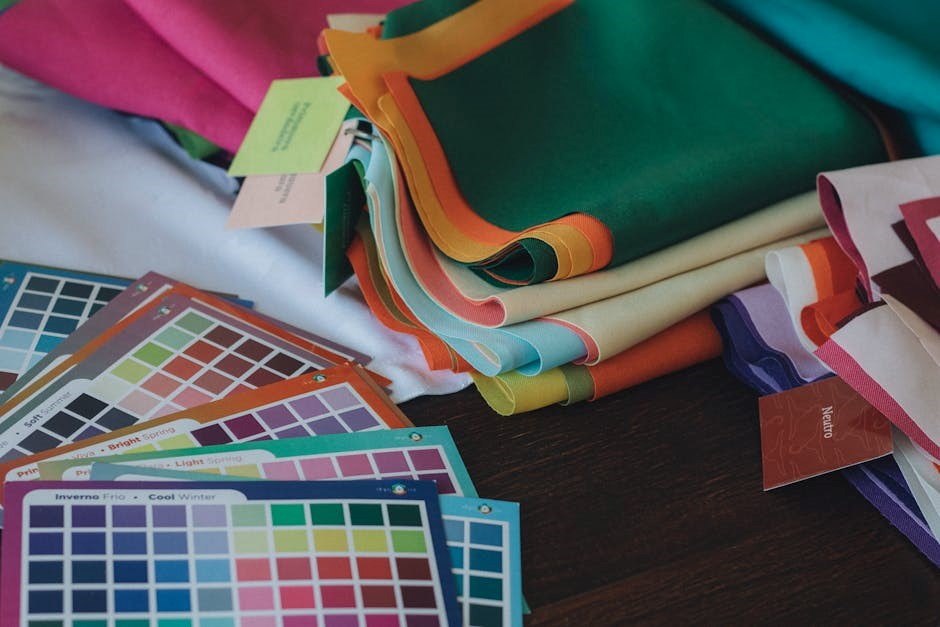
Projects and Inspiration
The guide offers a variety of sewing projects for all skill levels, sparking creativity and providing inspiration for unique, personalized designs to elevate your sewing journey.
Beginner-Friendly Projects to Get You Started
The guide offers a variety of beginner-friendly sewing projects, such as simple pillowcases, tote bags, and aprons, designed to build confidence and skills. These projects provide step-by-step instructions, clear diagrams, and practical tips to ensure success. They focus on essential techniques like hemming, sewing straight lines, and working with basic fabrics. Perfect for newcomers, these projects allow learners to practice foundational skills while creating useful items. The guide’s emphasis on clear instructions and visual aids makes it easy for beginners to grasp the basics and progress gradually to more complex tasks.
Intermediate and Advanced Sewing Projects
The guide caters to intermediate and advanced sewers with challenging yet rewarding projects, such as tailored jackets, intricate embroidery, and custom-fit garments. These projects delve into complex techniques like pattern alteration, advanced stitching, and working with delicate fabrics. Detailed instructions and diagrams guide sewers through tasks like constructing zippers, buttonholes, and embellishments. The guide also explores creative ways to customize designs, offering inspiration for unique and professional-looking results. Perfect for skilled sewers, these projects push boundaries and refine expertise, ensuring continued growth in sewing mastery.
Inspiration for Customizing and Creating Unique Designs
The guide sparks creativity with ideas for personalizing projects, from modern twists on classic patterns to innovative fabric combinations. It encourages sewers to experiment with embellishments, embroidery, and appliqué to create one-of-a-kind designs. Detailed sections on fabric selection and advanced techniques empower readers to infuse their personal style into every stitch. With inspiring examples and practical advice, the guide motivates sewers to push creative boundaries and craft truly unique garments and home decor items that reflect individuality and flair.
Reader’s Digest Complete Guide to Sewing remains an indispensable resource, offering timeless techniques, practical advice, and creative inspiration for sewers of all skill levels, ensuring lasting value.
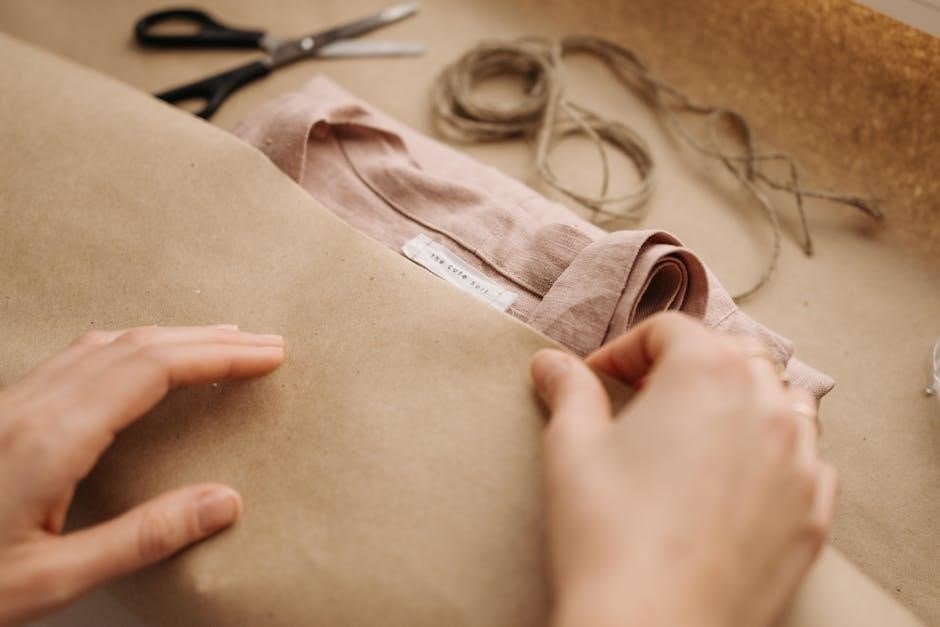
Why This Guide Remains Indispensable for Sewers
Reader’s Digest Complete Guide to Sewing remains indispensable due to its timeless, comprehensive coverage of sewing techniques, tools, and fabrics. First published in 1978, it has evolved to meet modern sewing needs while preserving traditional methods. The guide offers clear, step-by-step instructions, making it accessible to both beginners and advanced sewers. Its detailed sections on pattern alteration, fabric selection, and professional finishing techniques ensure sewers can achieve high-quality results. With practical advice and inspiration, this guide continues to be a trusted resource for anyone passionate about sewing, providing endless creative possibilities and technical guidance.
Final Tips for Mastering the Art of Sewing
To master sewing, always start with quality tools and fabrics, as they significantly impact results. Practice regularly to refine your skills, and don’t hesitate to experiment with new techniques. Pay attention to pattern instructions and measurements for a perfect fit. Stay patient and detail-oriented, especially when working on intricate designs. Learning from mistakes is key to improvement. Finally, embrace creativity and customization to make your projects truly unique. With dedication and the guidance of the Reader’s Digest Complete Guide to Sewing, you’ll achieve professional-level craftsmanship and enjoy the rewarding art of sewing.
